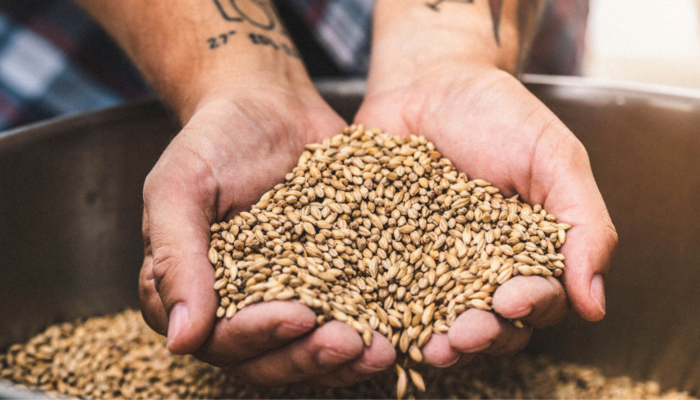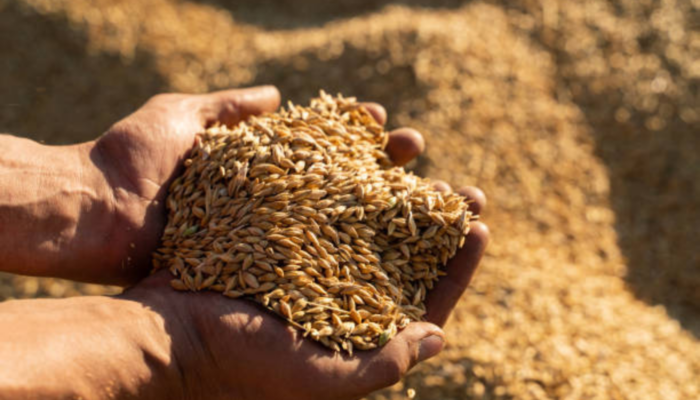Category: Malt
Malt types and varieties
News Brewery Creates First Commercial Beer Using All Unmalted Barley
Cool Cousin Brewing in New York had made a beer entirely from unmalted barley, instead creating wort by adding an exogenous enzyme cocktail in the mash. The process is ostensibly to save water and carbon dioxide in the brewing process.
(more...)
News Craft Maltsters Guild to Hold 2024 Conference in Davis, Calif. – Seeking Speaker Proposals
The Craft Maltsters Guild has selected the University of California Davis Conference Center in Northern California as the location for the 2024 Craft Malt Conference that will be held on February 23 and 24, 2024.
(more...)
Expert Topic Sustainability Efforts in Craft Malt
Conservation begins on the land. As the craft malt space continues to make inroads with beer, many of the farmers are showcasing their sustainability efforts. This helps drive deeper connections with clients and customers and shows what small batch farming can really do when it comes to meaningful growth.
(more...)
News Patagonia Partners with Breweries to Brew Beer with Innovative New Sustainable Grain
Working with Patagonia Provisions, the food and beverage division of the famed outdoor apparel company, Aslan Brewing in Bellingham, WA has brewed a beer with Kernza grain, a “regenerative perennial grain, has the potential to transform the brewing industry.”
(more...)
Expert Topic 2023 North American Malt Outlook
On January 12, 2023, the USDA National Agricultural Statistics Service released its annual 2022 Crop Production report and its quarterly Grain Stocks report. To break down the reports and get an outlook on malted barley for 2023, we recently spoke with Ashley McFarland, the Vice President – Technical Director for the American Malting Barley Association (AMBA).
(more...)
Expert Topic Brewing with Rye
In the whisky space rye is having a moment. The grain is used to create spicy and complex spirits that have gained critical acclaim and a rabid consumer following. In the beer space rye has long been a grain that brewers have used, but aside from some one offs or occasional releases there aren’t too many ales or lagers that are regularly spotted on shelves or on draught.
(more...)
News American Malting Barley Assoc. Releases Recommended Variety List for 2023
The American Malting Barley Association (AMBA) Board of Directors annually develops a list of recommended malting barley varieties for U.S. growers for the upcoming crop year. The list is intended to provide U.S. growers with guidance as to what varieties the industry may be contracting or purchasing in the coming year.
(more...)
Expert Topic Is a Wet Mill Right for your Brewery? A Chat with Scott Shirley at Lawson’s Finest Liquids
Wet milling remains one of those topics that brewers discuss but rarely encounter in the wild. Once solely the province of the largest craft brewers, in more recent years wet mills have become slightly more common but remain unusual to find in a smaller craft brewery.
(more...)
Sponsored Making the Most of Your Malt with Riley Aadland of RMS Brewing Solutions
This presentation focuses on giving a deeper dive into an often times misunderstood and undervalued part of the brewing process – the grist. Preparing the grist for mash in is the first step in the brew day and is a vital part in ensuring that the system is as efficient as possible from the very beginning. We will talk about the tools needed to do a grist analysis, how to go about doing the grist analysis to get accurate results, interpreting those results, and what to do with the data once you have it.
(more…)
Expert Topic Sugar Creek Malt’s Caleb Michalke Discusses Rauchmalt
As craft malting continues to rise in popularity and farmers are reviving traditions, brewers are looking for ways to have their beer stand out on the marketplace. While rauchbiers aren’t breaking any sales records there is a loyal set of fans who are looking for a smoky fix.
(more...)
Expert Topic Getting To Know Your Local Maltster
The popularity of local maltsters has exploded in recent years. Yet brewers still confess some trepidation over how to incorporate locally produced malts into their beer portfolios and brewing operations. We talk with Andrea Stanley, co-founder of Valley Malt in Hadley, Massachusetts, to explore the benefits of building a relationship with your local maltster.
(more…)








